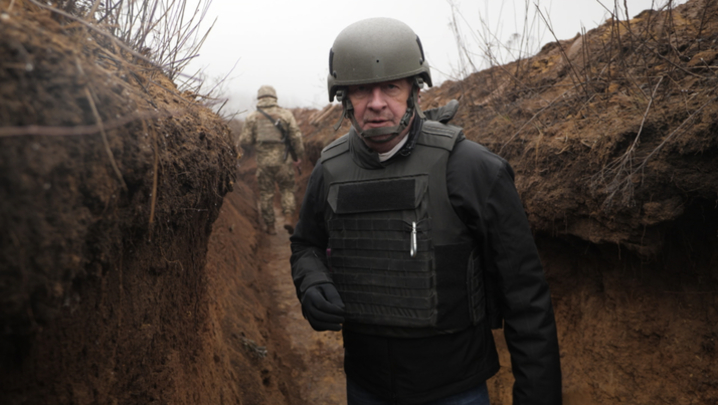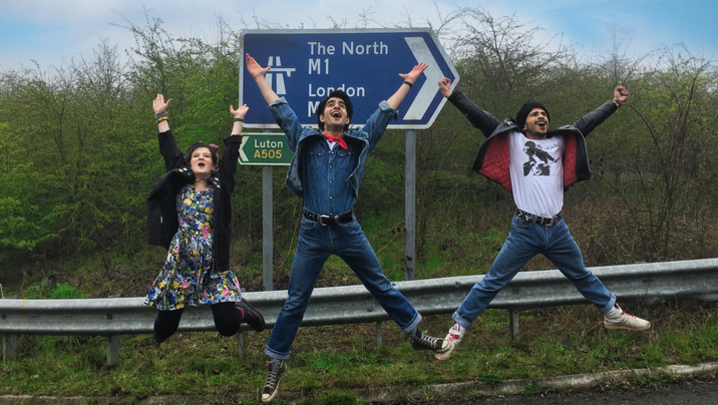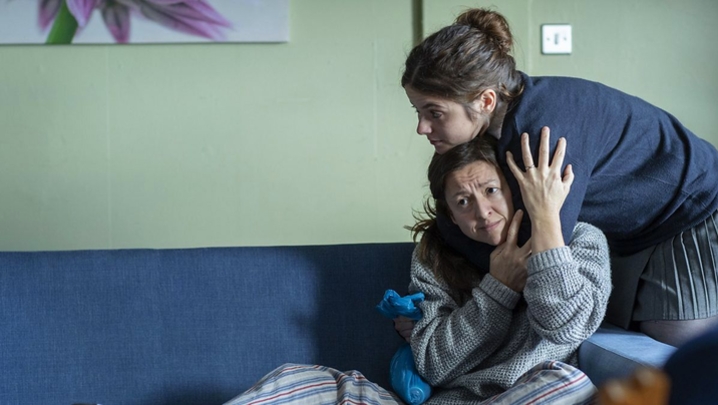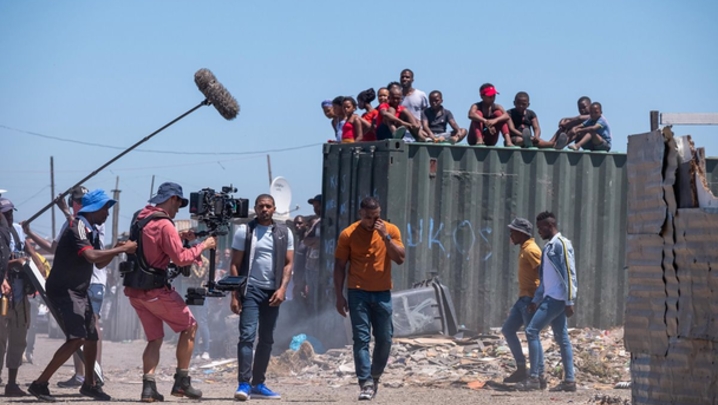Jude Poyer is responsible for the high-octane action sequences and bone-crunching but balletic fights of Sky Atlantic’s hit crime thriller Gangs of London.
What does the job involve?
There are two sides to the job: safety and creativity. We identify scenes that are potentially hazardous and, where possible, remove those risks, or reduce them to an acceptable level. That may involve using a stunt double instead of an actor or using safety equipment, such as elbow pads under costumes, out-of-shot crash mats or complex wire-rigging. Creatively, we could be choreographing fight sequences or staging shoot-outs.
How did you become a stunt co-ordinator?
Growing up, my passions were film, drama and martial arts. In 1996, when I was 18, I moved to Hong Kong, where a lot of martial arts action movies were made, to pursue a career in film and TV. I stayed for eight years, working as a stunt performer and then taking my first steps in co-ordinating stunts and action directing.
What was your first major TV job in the UK?
The BBC children’s series Spirit Warriors. I read that the BBC was making a fantasy martial arts show, heavily influenced by Hong Kong films and Chinese folklore. I wanted to be involved, emailed the producers and got the job. I was credited as the show’s choreographer because there was no contact in the fight scenes as they involved children.
What makes a good stunt co-ordinator?
You have to have performed a variety of stunts and observed other performers and co-ordinators on set. There’s very little that hasn’t been done before, so you need to draw on a full range of experience. A creative and visual mind helps. And you need humility. You shouldn’t pretend you know it all – seek the advice of experienced co-ordinators.
Are there specialists?
There are specialists in, say, vehicle or horse stunts. In the UK, most stunt professionals have more than one skill, including, usually, some experience with fighting. Fight scenes are my strongest suit, but I also do a variety of stunts, including fire and wire work.
Who do you work with?
Primarily, the director and cinematographer, but also with other heads of department, including special effects, armoury, production design, costume and visual effects. Together, we are working to realise the director’s vision.
When are you brought on to a production?
On an action-heavy show such as Gangs of London, the stunt co-ordinator is brought in early. There’s lots of planning, even down to the material the costumes are made of – if we’re doing stunts with fire, we want [non-flammable] natural fibres to be worn. For a fight, we might request long sleeves so elbow pads can be hidden. We sometimes scout locations for stunts or train cast members for fight sequences. Alternatively, on a sitcom or soap with only the odd stunt, we might turn up on the day to, for example, teach an actor to fall safely.
What stunts are you most proud of?
I’m very happy with how Gangs of London has turned out. Series creator Gareth Evans is a fantastic director of action but also very collaborative, so we worked together to design the sequences. It has been gratifying to see the positive response of audiences. The series is stylised, so action scenes are heavily choreographed, like a dance sequence. We actually had professional stunt performers playing some roles.
What are the best and worst parts of the job?
Stunt people are well paid and we get to see the world – it’s a privilege. It doesn’t feel like a job – films and fight choreography are my hobby – and, if it all comes together, I love seeing the end result. Occasionally, you encounter the odd director or actor with an ego problem, or someone who doesn’t value safety on set highly enough.
Are stunts always safe?
It would be arrogant to say you can make something totally safe. Stunts are inherently risky, but it’s the job of a co-ordinator to carry out risk assessments and mitigate the risks.
Have you refused to do a stunt?
If there’s something beyond my expertise, I wouldn’t do it. But, usually, there will be a way to make a stunt safe – often by employing visual effects.
Can you share a trick of the trade?
On Gangs of London we used pre-vis [pre-visualisation] for a lot of the action sequences. I spent three months with my team, Gareth and the cinematographer, Matt Flannery, in a rehearsal space and we built the sets out of cardboard and shot low-tech versions of the fight sequences and set pieces.
When it came to the shoot, we followed the pre-vis sequences, shot for shot. This saved time and money. In the US, it’s been common for more than a decade; in the UK, there’s resistance to pre-vis. We should embrace it.
Has the job changed over time?
We have a more safety-conscious culture now, which is a good thing. As a result, we take more time to assess risk and plan sequences. We are also making progress in being more inclusive.
Is digital technology a threat to the stunt co-ordinator?
I welcome advances in technology. We use it to paint out wires and crash mats, which makes stunts more realistic. Long ago, if a person was flying on a cable, the hope was that the cable was thin enough that it wouldn’t be picked up on camera. But sometimes those cables broke.… Now, people hang on ropes that can hold enormous weight but, using visual effects, we remove them from the shot. Knowledge of visual effects is part of the stunt co-ordinator’s arsenal. I don’t see a time when we won’t be needed.
What advice would you give to a would-be stunt co-ordinator?
Get lots of years under your belt performing, and study action cinema and TV, old and new, from all over the world. You have to know more than how to throw a fake punch or land safely; you need to be a film-maker.
Stunt co-ordinator Jude Poyer was interviewed by Matthew Bell.







